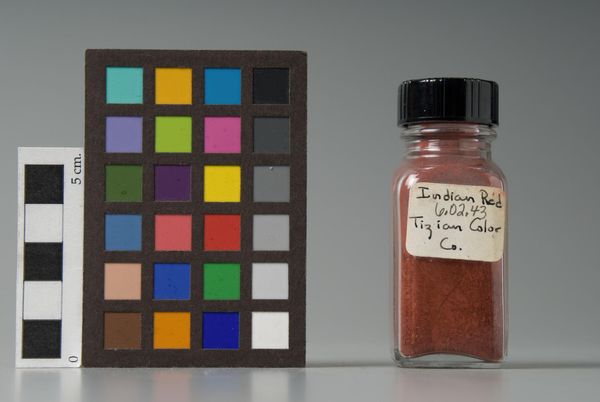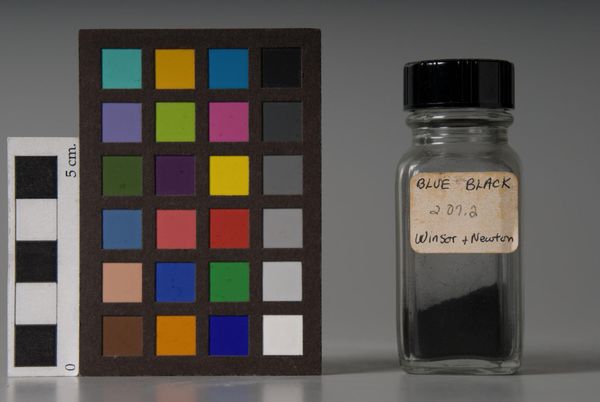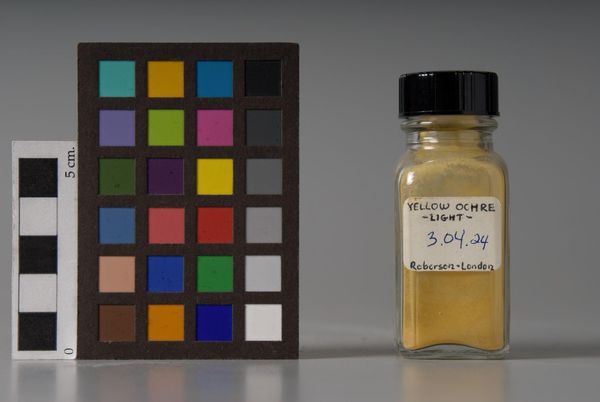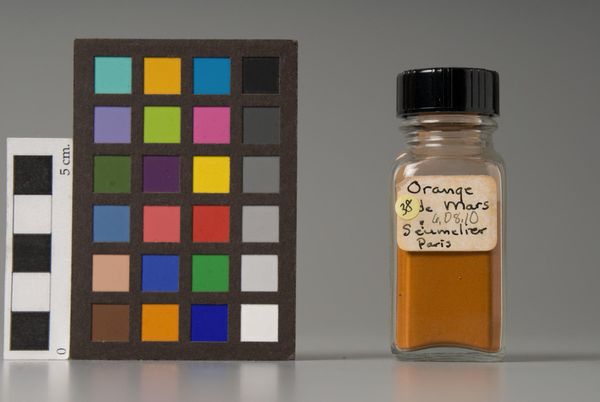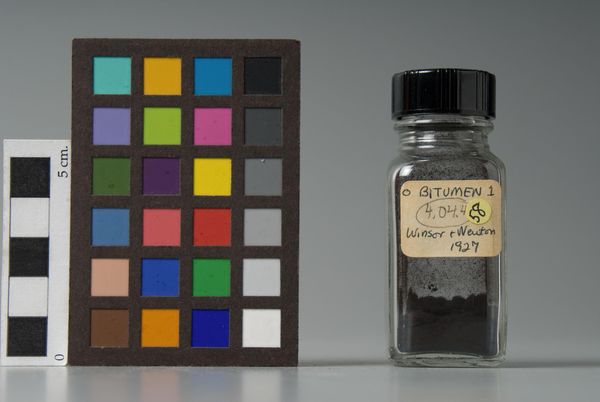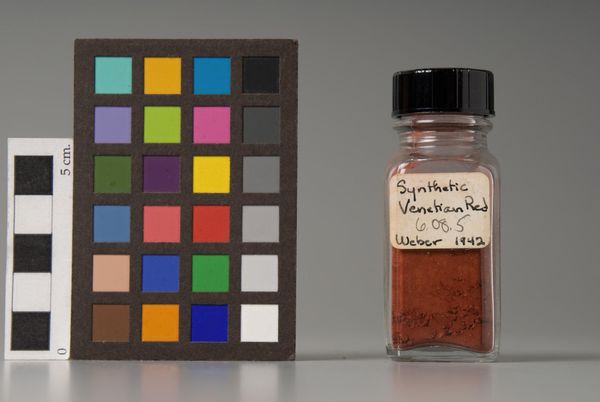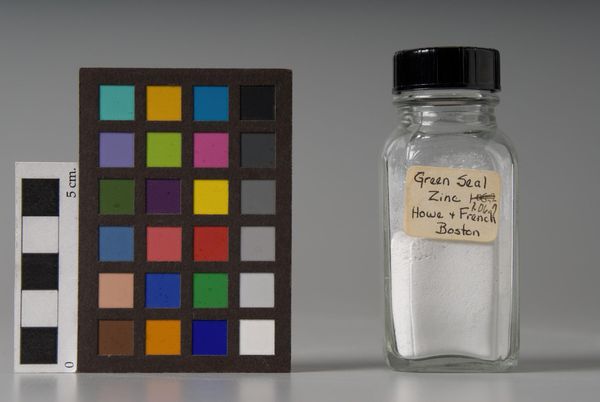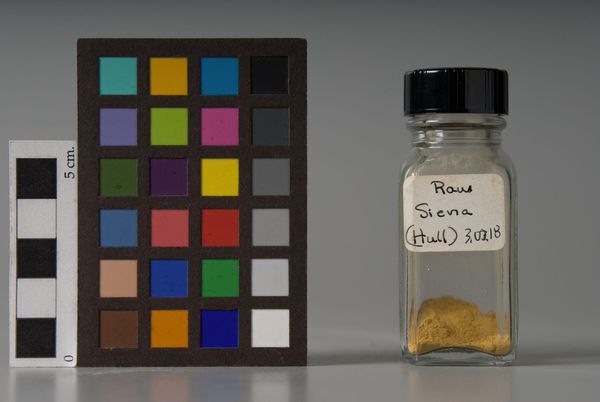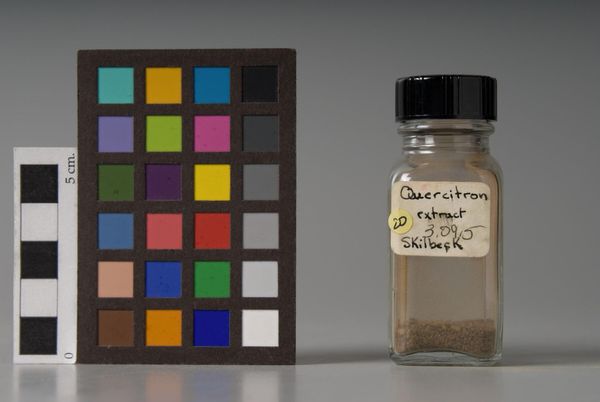
Copyright: CC0 1.0
Curator: The Harvard Art Museums hold this intriguing item manufactured by F. Weber & Company, called "Mars Yellow." It’s a jar of pigment dating back to 1930, presented alongside a color calibration chart. Editor: It feels so sterile and clinical, yet there's something quite evocative about a single jar of pigment isolated like this. The label is aged, giving it a tangible sense of history. Curator: Exactly. Weber's Mars pigments were significant in art history because they were among the first synthetically produced colors. Iron oxides, created in the lab, gave artists greater control and consistency in their palettes. Editor: It speaks to a shift towards industrialization, even in artistic production. Who had access to these materials, and how did that impact the art being made? Were they more consistent in quality, or considered less valuable than natural pigments? Curator: That's the critical question. Synthetic pigments democratized color, making it more accessible, but also potentially altered the perceived value and authenticity within the art world. Editor: It also makes me consider how the industrial production of art materials contributed to pollution, something we are still grappling with today. Curator: Indeed, seeing it from that perspective, this seemingly simple jar opens up a complex history of art, industry, and environmental impact. Editor: A tiny jar holding such a big narrative.
Comments
No comments
Be the first to comment and join the conversation on the ultimate creative platform.

